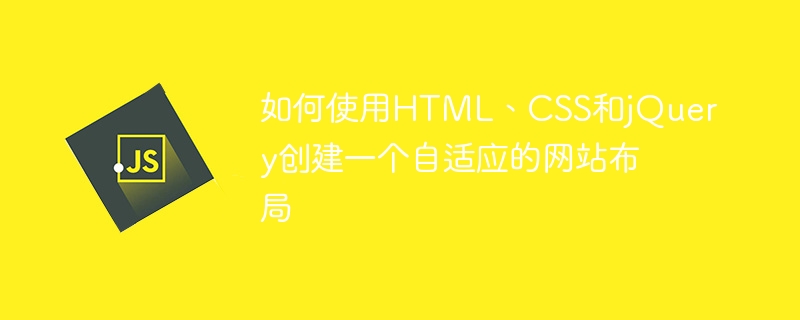

How to use HTML, CSS and jQuery to create an adaptive website layout
In today's Internet era, the adaptive layout of the website has become an essential Require. The adaptive layout of the website can enable the website to display a good user experience on different devices and adapt to devices of different screen sizes, such as computers, tablets, and mobile phones. This article will introduce how to use HTML, CSS and jQuery to create a responsive website layout, and provide specific code examples.
<!DOCTYPE html>
<html>
<head>
<meta charset="UTF-8">
<title>自适应网站布局</title>
<link rel="stylesheet" href="style.css">
</head>
<body>
<header>
<h1>网站标题</h1>
</header>
<nav>
<ul>
<li><a href="#">菜单1</a></li>
<li><a href="#">菜单2</a></li>
<li><a href="#">菜单3</a></li>
</ul>
</nav>
<section>
<h2>内容部分1</h2>
<p>这是内容部分1的内容...</p>
</section>
<aside>
<h2>侧边栏</h2>
<p>这是侧边栏的内容...</p>
</aside>
<footer>
<p>版权信息</p>
</footer>
<script src="jquery.min.js"></script>
<script src="script.js"></script>
</body>
</html>body {
font-family: Arial, sans-serif;
margin: 0;
padding: 0;
}
header, nav, section, aside, footer {
padding: 20px;
}
header {
background-color: #333;
color: #fff;
}
nav ul {
list-style-type: none;
margin: 0;
padding: 0;
}
nav ul li {
display: inline;
}
nav ul li a {
color: #333;
text-decoration: none;
padding: 10px;
}
section, aside {
background-color: #eee;
margin-bottom: 20px;
}
footer {
background-color: #333;
color: #fff;
text-align: center;
}$(document).ready(function() {
// 检测屏幕尺寸
$(window).resize(function() {
if ($(window).width() < 768) {
// 小屏幕布局
$("nav").addClass("responsive");
} else {
// 大屏幕布局
$("nav").removeClass("responsive");
}
});
});@media (max-width: 768px) {
nav {
display: none;
}
nav.responsive {
display: block;
}
}The above code uses @media query and sets the navigation bar to be hidden when the screen width is less than 768 pixels. When a responsive is added using jQuery class, the navigation bar is displayed.
The above is the detailed content of How to create a responsive website layout using HTML, CSS and jQuery. For more information, please follow other related articles on the PHP Chinese website!